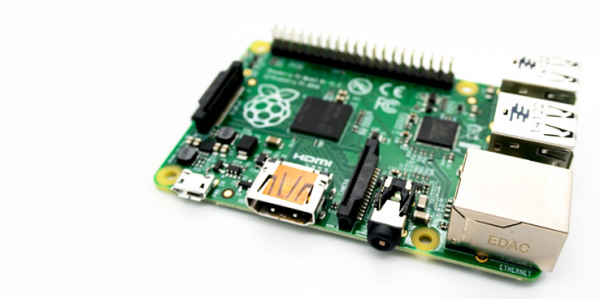Corporations deal with a great amount of unstructured data. Therefore the value of data technology platforms grows exponentially and Telcos are on the way to offer more sophisticated data processing platforms. IDC researchers forecasted that the revenue for the big data technology infrastructure to grow by 40% per annum for the next three years.*
written by:
Anton Rykov
Product Manager, Qulix Systems
IoT projects require investments and are almost never risk-free. The 2017 Cisco survey statistics show that discouraging 75% of self-initiated IoT projects were considered a failure. With this in mind, some back-up never hurts.
Generally, to test an idea before millions of dollars are wasted, many companies develop a prototype. Although simplified to its basics, a prototype is still capable of demonstrating impressive functionality without draining the entire project budget. It helps test out the underlying concept and determine the long run of the product. Here are the tips you may find useful for a painless launch of your pilot.
Initially, it takes a bit of effort to ensure you have all of the proper expertise in the field. Get ready with the answers to the major non-technical questions, such as:
- What will be the minimum valuable product?
- What part of the initial functionality will fit 1st, 2nd or 10th stage (in case of a positive outcome)?
- How to measure a success or a failure of the prototype (e.g. at what stage users will join the project)?
The mentioned above expertise also comprises deep insight on embedded firmware, electrical engineering, mechanical engineering, and testing. As soon as you’re ready with the team of professionals, you have the get-go. The basic features of a to-be project are:
Communication Section
- A device may connect to the Internet either wirelessly or through a wired connection (Bluetooth, WiFi, Ethernet, LoRa, Zigbee, 6LoWPAN)
Processing Section
- Decide on a “brain” of the system (generally, a low-power micro-controller which can be a RaspberryPi, BeagleBone, Texas Instruments, etc.)
Powering Section
- Benefits vary, be it a battery-operated or a plugged-in option (rechargeable LiPo batteries, USB powered, PoE, or an AA/AAA Batteries)
User Output/Input Section
- Buttons, switches, LEDs, speakers or any other option that allows you to interact with the device
Sensoring Section
- Consists of a set of sensors giving your precise data on the surrounding environment (temperature, brightness, humidity, etc.)
Even the basic knowledge to build an IoT prototype is relatively complex. In case you decide to turn to a third party, the only task for you to resolve is finding the company.
Prototyping requests make a solid portion of our portfolio. We’d like to share with you our expertise and demonstrate one of the use cases. Described below is a prototyping project we prepared for the German multinational automotive corporation. The idea was to create a viable version of customized product with a basic set of functions, in this case a vehicle monitoring system. Basically it’s an IoT device integrating with an IoT Hub and transferring the data to the storage. The implementation included leveraging the most cost-effective functionality that also meets the Client’s technical requirements.
Our network consists of three basic items
- Texas Instruments Sensortags used as wireless sensors
- Raspberry Pi as the Integrator
- Android client as the Central Unit.
For better energy-saving and performance, 6LoWPAN was incorporated as a wireless network standard, while the Central Unit communication with the Integrator was through a WiFi connection.
As soon as the sensors which form 6LoWPAN network are on and connected to the Integrator, they start sending measured data at an adjustable interval, for example every 10 seconds. Any deviation from the threshold settings is immediately displayed on the screen of the Central Unit. The sensors provide reliable data on air pressure, ambient temperature, battery voltage, HDC humidity and a number of other parameters. When the Android client is switched off it does not mean that data transfer is lost. The full chain of events can be viewed at any moment convenient to you.
“Is it secure?”
“How can I be sure my data is not corrupted or tampered?”
You have every reason to ask us such questions and we have a fair and detailed answer prepared. Security of the solution has been significantly improved by introducing authentication to Integration hub and encryption of wireless connection.
In conclusion, our prototype has all of the functionality it requires, it is simple and reliable.
See our video for more detailed information.
https://www.youtube.com/watch?reload=9&v=vy23HqMKzZs&feature=youtu.be
Our set of technologies and protocols are custom-defined and tailored to the parameters highlighted by the Client. Any component of the system can be replaced, so the network is perfectly adaptable. Your technology may incorporate cable communication (MODBUS, CAN) or short-range wireless communication (6LoWPAN, ZigBee, Bluetooth, WiFi). In case you opt for LPWAN solutions, we’ll be happy to share our expertise in LoRaWAN or NB-IoT applications.
Do not hesitate to contact our specialists in case you have any unresolved issues or for more info on our prototypes at request@qulix.com.
Is there any system software development you’re planning but not sure about?
Contact us. We care about your time.

Contacts
Feel free to get in touch with us! Use this contact form for an ASAP response.
Call us at +44 151 528 8015
E-mail us at request@qulix.com







